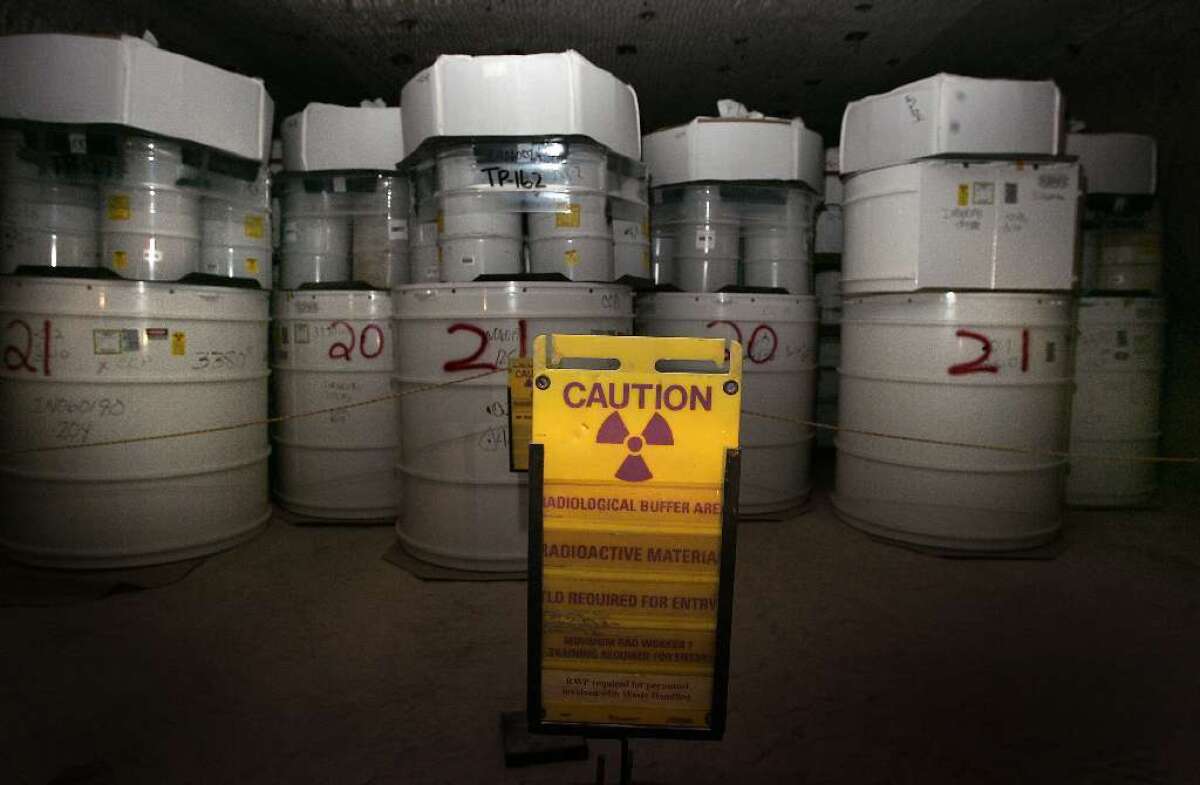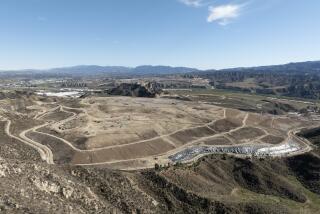Nuclear accident in New Mexico ranks among the costliest in U.S. history

- Share via
When a drum containing radioactive waste blew up in an underground nuclear dump in New Mexico two years ago, the Energy Department rushed to quell concerns in the Carlsbad desert community and quickly reported progress on resuming operations.
The early federal statements gave no hint that the blast had caused massive long-term damage to the dump, a facility crucial to the nuclear weapons cleanup program that spans the nation, or that it would jeopardize the Energy Department’s credibility in dealing with the tricky problem of radioactive waste.
But the explosion ranks among the costliest nuclear accidents in U.S. history, according to a Times analysis. The long-term cost of the mishap could top $2 billion, an amount roughly in the range of the cleanup after the 1979 partial meltdown at the Three Mile Island nuclear power plant in Pennsylvania.
The Feb. 14, 2014, accident is also complicating cleanup programs at about a dozen current and former nuclear weapons sites across the U.S. Thousands of tons of radioactive waste that were headed for the dump are backed up in Idaho, Washington, New Mexico and elsewhere, state officials said in interviews.
Washington state officials were recently forced to accept delays in moving the equivalent of 24,000 drums of nuclear waste from Hanford site to the New Mexico dump. The deal has further antagonized the relationship between the state and federal regulators.
“The federal government has an obligation to clean up the nuclear waste at Hanford,” Democratic Gov. Jay Inslee said in a statement. “I will continue to press them to honor their commitments to protect Washingtonians’ public health and our natural resources.”
Other states are no less insistent. The Energy Department has agreed to move the equivalent of nearly 200,000 drums from Idaho National Laboratory by 2018.
“Our expectation is that they will continue to meet the settlement agreement,” said Susan Burke, an oversight coordinator at the state’s Department of Environmental Quality.
The dump, officially known as the Waste Isolation Pilot Plant, was designed to place waste from nuclear weapons production since World War II into ancient salt beds, which engineers say will collapse around the waste and permanently seal it. The equivalent of 277,000 drums of radioactive waste is headed to the dump, according to federal documents.
The dump was dug much like a conventional mine, with vertical shafts and a maze of horizontal drifts. It had operated problem-free for 15 years and was touted by the Energy Department as a major success until the explosion, which involved a drum of of plutonium and americium waste that had been packaged at the Los Alamos National Laboratory.
The problem was traced to material — actual kitty litter — used to blot up liquids in sealed drums. Lab officials had decided to substitute an organic material for a mineral one. But the new material caused a complex chemical reaction that blew the lid off a drum, sending mounds of white, radioactive foam into the air and contaminating 35% of the underground area.
There is no question the Energy Department has downplayed the significance of the accident.
— Don Hancock, Southwest Research and Information Center
“There is no question the Energy Department has downplayed the significance of the accident,” said Don Hancock, who monitors the dump for the watchdog group Southwest Research and Information Center.
Though the error at the Los Alamos lab caused the accident, a federal investigation found more than two dozen safety lapses at the dump. The dump’s filtration system was supposed to prevent any radioactive releases, but it malfunctioned.
Twenty-one workers on the surface received low doses of radiation that federal officials said were well within safety limits. No workers were in the mine when the drum blew.
Energy Department officials declined to be interviewed about the incident but agreed to respond to written questions. The dump is operated by Nuclear Waste Partnership, which is led by the Los Angeles-based engineering firm AECOM. The company declined to comment.
Federal officials have set an ambitious goal to reopen the site for at least limited waste processing by the end of this year, but full operations can not resume until a new ventilation system is completed in about 2021.
The direct cost of the cleanup is now $640 million, based on a contract modification made last month with Nuclear Waste Partnership that increased the cost from $1.3 billion to nearly $2 billion. The cost-plus contract leaves open the possibility of even higher costs as repairs continue. And it does not include the complete replacement of the contaminated ventilation system or any future costs of operating the mine longer than originally planned.
Op-Ed: Let’s get our nuclear weapons out of Turkey »
An Energy Department spokesperson declined to address the cost issue but acknowledged that the dump would either have to stay open longer or find a way to handle more waste each year to make up for the shutdown. She said the contract modification gave the government the option to cut short the agreement with Nuclear Waste Partnership.
It costs about $200 million a year to operate the dump, so keeping it open an additional seven years could cost $1.4 billion. A top scientific expert on the dump concurred with that assessment.
In addition, the federal government faces expenses — known as “hotel costs” — to temporarily store the waste before it is shipped to New Mexico, said Ellis Eberlein of Washington’s Department of Ecology.
The Hanford site stores the equivalent of 24,000 drums of waste that must be inspected every week. “You have to make sure nothing leaks,” he said.
The cleanup of the Three Mile Island plant took 12 years and was estimated to cost $1 billion by 1993, or $1.7 billion adjusted for inflation today. The estimate did not include the cost of replacing the power the shut-down plant was no longer generating.
Other radioactive contamination at nuclear weapons sites is costing tens of billions of dollars to clean up, but it is generally the result of deliberate practices such as dumping radioactive waste into the ground.
James Conca, a consultant who has advised the Energy Department on nuclear waste issues, described the accident as a comedy of errors and said that federal officials are being “overly cautious” about the cleanup. “It got contaminated, but a new exhaust shaft is kind of ridiculous,” he said.
For now, workers entering contaminated areas must wear protective gear, including respirators, the Energy Department spokesperson said. She noted that the size of the restricted area had been significantly reduced earlier this year.
Hancock suggested that the dump might never resume full operations.
“The facility was never designed to operate in a contaminated state,” he said. “It was supposed to open clean and stay clean, but now it will have to operate dirty. Nobody at the Energy Department wants to consider the potential that it isn’t fixable.”
Giving up on the New Mexico dump would have huge environmental, legal and political ramifications. This year the Energy Department decided to dilute 6 metric tons of surplus plutonium in South Carolina and send it to the dump, potentially setting a precedent for disposing of bomb-grade materials. The U.S. has agreements with Russia on mutual reductions of plutonium.
The decision means operations at the dump must resume, said Edwin Lyman, a physicist and nuclear expert at the Union of Concerned Scientists.
“They have no choice,” he said. “No matter what it costs.”
Twitter: @RVartabedian
To read the article in Spanish, click here.
MORE NATIONAL NEWS
In a flooded Louisiana neighborhood, residents ride home through alligator-infested waters
Donald Trump ‘wrestling’ with how — and whether — to deport 11 million people from
U.S. Justice Department will phase out private prisons
More to Read
Sign up for Essential California
The most important California stories and recommendations in your inbox every morning.
You may occasionally receive promotional content from the Los Angeles Times.











